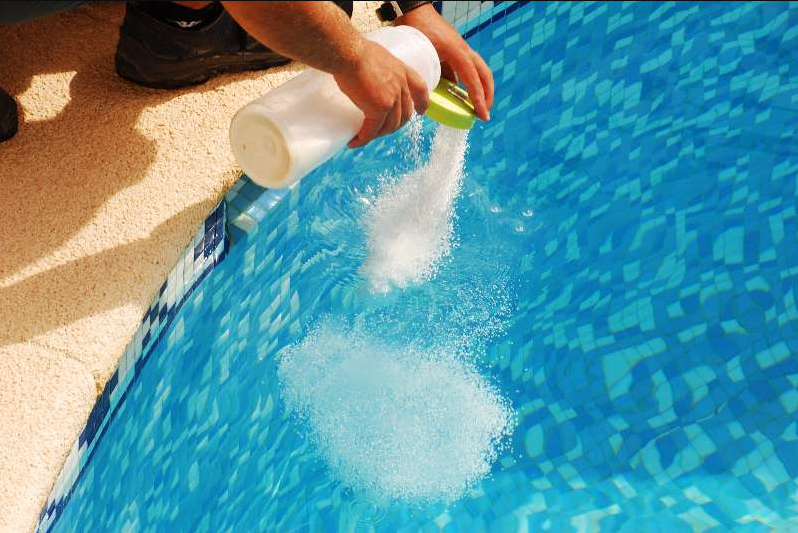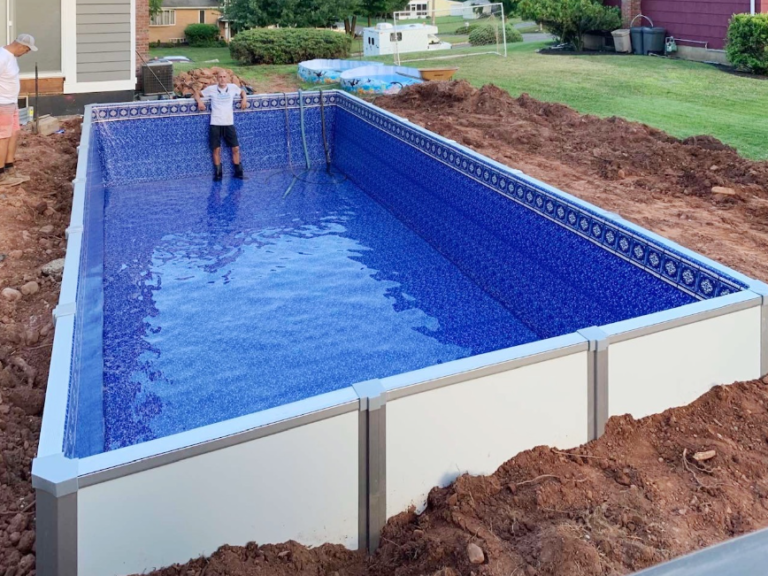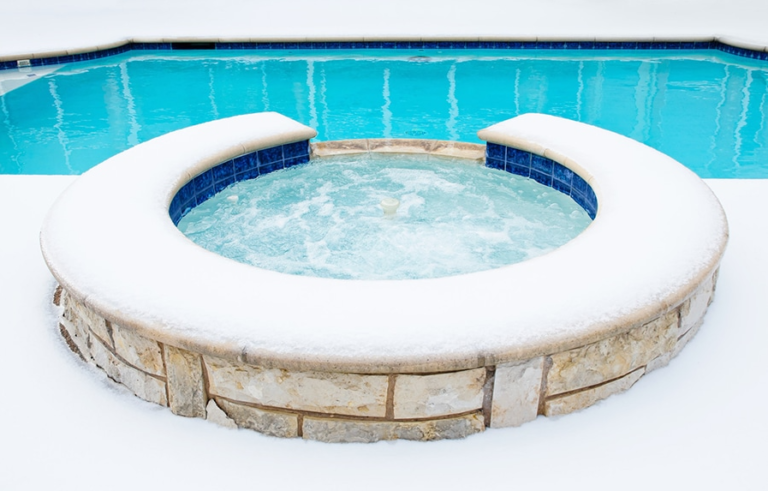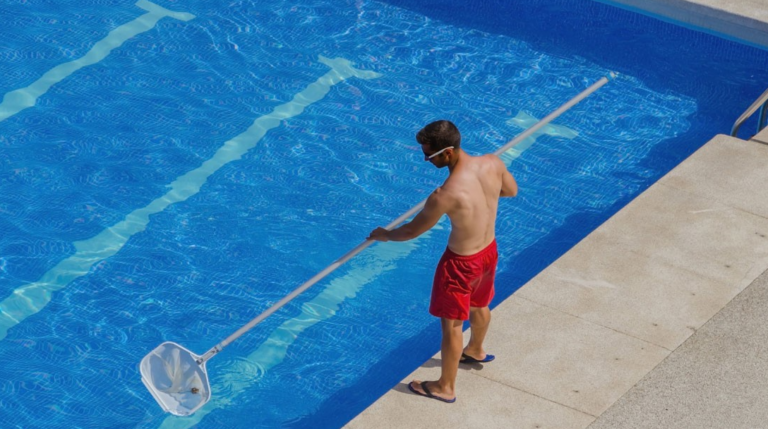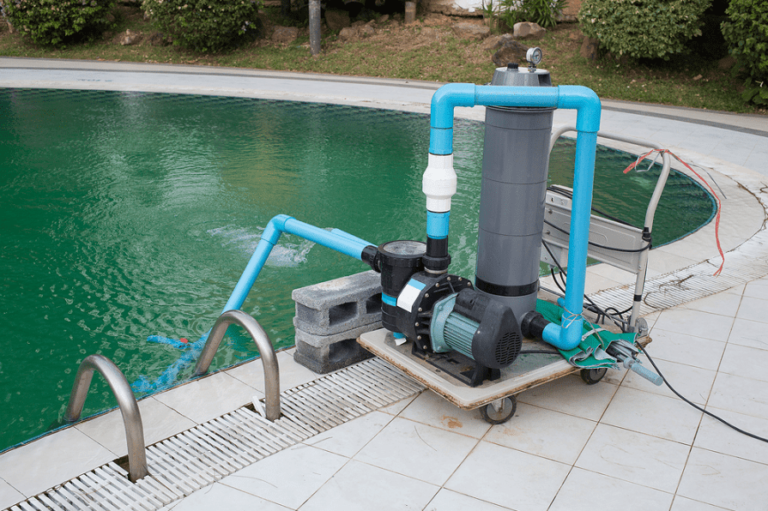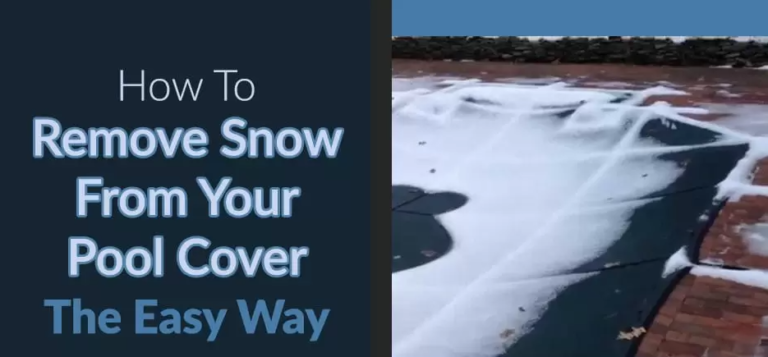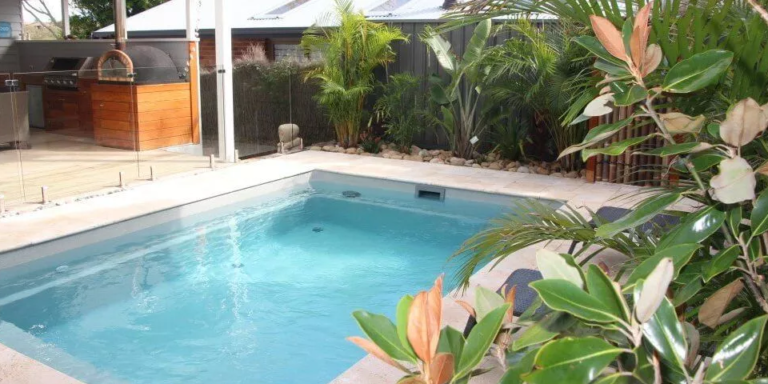All About Green pool
Green pool after Shock:
Nothing beats a dip in your pool on a beautiful summer day. You walk into your backyard only to be greeted with a pool that looks like it’s been going for a week.
it’s fine. You’ve got a green pond!
Unfortunately, this is a scenario that doesn’t happen very often. We have previously talked about how to fix a green pool and we have covered the following steps to clean your water.
Balance the pH and dechlorinate the water.
Check the filtration system for any problems or malfunctions. Make corrections if necessary.
Brush the walls and floor to remove algae from the pool water. Pick up any debris from under the pool floor. Make sure all baskets are clean.
Backwash the filter.
Return the valve to the filter and turn on the pump.

Green Pool Water
Reviewing the questions pool owners ask on the Internet, they are having a hard time with water clarity even when they think all the chemicals are balanced. We’ll discuss why chlorine, pH, and alkalinity are just the beginning of maintaining clean pool water, and then we’ll tackle the problem.
Basic chemical requirements for clean pond water
Just to summarize, these are the three basic chemical requirements for a pool to stay clean.
Free Chlorine: Unless there is enough chlorine in the water, algae will grow and make your pool green and cloudy.
Correct pH: For normal use, your pool’s pH should be between 7.4 and 7.6: for shocking, it should be between 7.2 and 7.6. Shocking a pond with too high a pH will cause cloudiness.
Correct Alkalinity: The correct range of alkalinity (dissolved salts that keep the pH stable) makes it easier to maintain pH and chlorine levels.
It is a beautiful summer day. You feel like going for a swim. You walk into your backyard only to be greeted with a pool that looks like it’s been going for a week.
it’s fine. You’ve got a green pool.
So you do some research and are told to shock the pool to clear it. But even after the shock, the pool is green.
What gives?!
Is the pool still green after shock?
So you thought your green pool would easily recover from a shock? Here are some reasons why it didn’t work.
Is your pool still green after shock? A common DIY problem. Usually, the next step in a pool cleaning service or DIY deals with these next three things to get your pool back to its pristine shape: filtration system, the right chemicals, and patience. We recommend having a professional clean the pool or teach you techniques, especially when dealing with pool chemicals. Here are some guidelines to keep your pool fresh and clean.
It was not caused by algae.
Did you know that algae growth isn’t the only reason that can turn your swimming pool water green?
The first is water that is high in copper. This mainly happens when opening your pool for the first time. You fill it up, shock the pool, and then it turns green.
It all depends on how much copper is in the water source. Well, water is notorious for having high copper levels, so your pond will be more susceptible to greening if that’s where you get your water from.
Copper is a metal that is prone to oxidation (just look at the Statue of Liberty). When the shock chlorine oxidizes the copper, it turns green and that’s what you see in the pool. To get rid of this you will need to increase the calcium hardness of the pool by adding calcium chloride.
Another culprit could be high pollen levels. Tree pollen, grass pollen, grass, and ragweed pollen can easily enter pond water during the pollen season.
Pollen floats in water, so it’s fairly easy to remove it by skimming, filtering, and cleaning your pool. In some cases it can be stubborn, so you may have to break out the pool vacuum and perform this cleaning ritual a few times to remove each stain.
Your best line of defense against pollen is to stay on top of your pool care. Keeping your filtration system running is key, as a stagnant pool is one that will cause problems.
Make sure your pump and filters are always at peak performance, skim the pool several times a day, and maintain your backyard environment to reduce pollen levels.
Did you just shock your pool or add a large dose of chlorine to turn the water green? First, don’t worry, it’s normal for pools to turn green after shock.
In this article, I’ll tell you why your pool turned green after a chlorine shock and how to clean your pool again.
When the water contains metals such as copper or iron, pools may turn green immediately after shock or chlorination. These metals oxidize when exposed to high levels of chlorine, turning pool water green. Metals in water are caused by the use of certain algaecides and well water. Adding metal control products will help restore pool water.
Recently added Algaecide.

If I were a betting man, I’d probably say the reason you shocked your pond in the first place was that it was cloudy or you had an algae problem. If you’ve treated your pool with an algaecide, it’s likely that your pool has turned green and the algae haven’t cleared up as well as you’d hoped.
There are a few different types of algae that contain different chemicals to suppress and fight the algae. Many of them contain copper or copper sulfate. It is copper that oxidizes in water. And when copper oxidizes, it turns green, making your pool look green.
Concomitant shock treatment or the addition of too much chlorine will accelerate the copper-based algaecide oxidation process. Your water can actually turn green almost instantly.
How to fix:
One way to combat this is to use a metal control product that chelates metals. To “chelate” in this sense is to bind metals. This product binds metals but will not remove metals.
Prepare pool water for shock and testing.
Pool steel green after shock and alga side
Why is my pool still green after chlorination, and is it safe to swim in a pool with algae? Not required. If you swim in water with algae, problems like bacterial infections and skin problems can occur.
If you have insufficient chlorine and an excess of metal elements in the pool water, algae will remain in your pool after the shock. So, to start the cleaning process. Remove all debris from the pond with a leaf net and then allow the small pieces of dirt to settle.
You’ve Balanced Your Pool’s Water Chemistry Balance the Water Chemistry to Fix a Green Pool
After dealing with a serious algae problem, you’ve likely become an expert on pool water chemistry. In addition to shocking and applying algaecide, testing and balancing your water is critical to eliminating algae. Maintaining an ideal balance of water chemistry is critical to overall pool health. However, some chemicals, particularly pH and Total Alkalinity, are more effective at fighting algae and green pools when they are slightly outside of their ideal range.
Too much or too little cyanuric acid (stabilizer).
If you have used a chlorine-based shock product, and you still have algae, or the water has turned green after using it, another reason is that the cyanuric acid (pool stabilizer) level is too high. Was too much or too little?
Pool stabilizers are either added to water separately as cyanuric acid or come as an additive to some pool chlorines such as dichlor or trichlor. A pool stabilizer will protect your outdoor pool’s chlorine from the sun’s UV rays. UV light destroys or degrades unstable chlorine.
Without a stabilizer, when your pool is exposed to sunlight, any pool shock or chlorine you’ve added will degrade in a matter of hours and you won’t have the algae-killing effect it should. You had hoped.
That being said, too much stabilizer is also a bad thing. The higher the stabilizer level, the longer it takes for chlorine to kill bacteria and algae. And if the chlorine is taking too long to kill the algae, that could be why your pool is green after you shock it.
How to fix:
Before adding a pole shock, check that your stabilizer level is correct. Do not skip this step. The ideal stabilizer level is 30-50 ppm. Stabilizer levels above 80 or 100 ppm will significantly slow down chlorine. A level below 30 ppm will mean that the sun will break down the chlorine faster than it can kill the green algae.
If your stabilizer level is too low, this is an easy fix. Go grab some cyanuric acid. Sometimes called pool stabilizer or pool sunscreen or CYA. Follow the instructions and add it to your pool.
Test the water
If your pool is green, but high in chlorine, don’t worry too much. The most important test to check if your pool is still green after shocking is the pH level. Buy a kit or test strip and test the pH as this will tell if you need to add other chemicals.
A high pH means your water is alkaline and cloudy, especially after shock. In this case, add hydrochloric acid to the water to neutralize the basic elements in the water. Ideally, the pH level should be low. Even with saltwater pools, it’s just as important to check their chemical balance.
You didn’t brush well.
As a toothbrush is to healthy teeth, a pool brush is to a healthy pool.
From algae to pollen and other organic debris, there are still things trapped in the walls of your pond that are causing green water.
This will be especially present in the dead spots of the pool. These are areas where the circulatory system does not reach enough, causing contamination.
When it comes to pool brushes, make sure you have the right brush for your particular pool. Steel bristle brushes are ideal for hard surfaces like plaster or concrete, while soft bristles work well for finishes like tile.
pH: 7.4–7.6
When fighting algae, it’s beneficial to keep your pH level slightly lower than normal. This makes your pool more acidic and corrosive. Although acidic water is not necessary for pool surfaces or equipment, it does remove algae quickly. Once the algae is completely gone, return the pH to the above range.
Total alkalinity: 80-120 ppm
Just like pH, keeping your total alkalinity slightly lower than normal will give you an extra boost when removing algae. Once the algae is completely gone, return the total alkalinity to the above range.
Shock Pool
Why is my pond still green, you wonder? Well, it’s a chemical imbalance. So first, make sure the pool’s pH is 7, then shock the pool with chemicals. Take your liquid chlorine and distribute it evenly around the pool, and then turn on the filter.
Allow the entire liquid chlorine to circulate in the pool for several hours before brushing the pool. Be careful when brushing. You can also use a suitable quality algaecide to clean the pond. Always consult a professional before handling and adding any amount of chemicals.
Heavy metals in pool water.
Have you just topped up your pool water from an unknown source? A very likely source is that your pool water contains heavy metals. The only way to determine this is to either get some special test strips or bring a water sample to your local pool shop because your regular test strips don’t usually test for metals in pool water.
Filter types
If your pool is still green after the shock and algae side, be precise with your filter type. If you are using a sand filter, the process described above will be sufficient if you check and backwash your filter every day, especially if the pool’s average chemical balance is at least above normal when the water is clean. Five units more.
On the other hand, check that the cartridge filter is in good condition before cleaning it. However, with this type of filter, you need to clean your pool more often than with other filters. Also, run the filter twice each day until your pool water is clean.
You didn’t shock properly
Did you shock the pool with the proper amount of shock?
Shocking a pool is very difficult, but if you miscalculate, you may have shocked the pool.
Keep in mind that green ponds usually require a few cycles to get them back under control. Shock doses are usually 1 bag per 10,000 gallons of pool water.
If it is the chlorine of your choice, using a large dose of granular calcium hypochlorite shock, or sodium hypochlorite (liquid chlorine) is recommended.
I shocked my pond, so why is it still cloudy?
If your pH is not too high, filtration problems are likely the cause of your cloudy pool. The problem may depend on the type of filter.
If you have a sand filter, it may take a week or more for the pool to be completely clean. Even if it is a working sand filter.
If you have a cartridge filter, it must have a good cartridge. A cartridge can only handle so much. If your pool is cloudy, the cartridge needs to be cleaned daily until the pool is clear.
If you have a diatomaceous-earth (DE) filter and the pool is cloudy,
The pool needs further filtering.
Green ponds can take time to clean and are an area where fewer people fall, and filtering isn’t enough. If you just added pool shock and the pool is still green, turn on this filter and let it run.
Running your filter for 4,6 or 8 hours is not enough. You need to get the algae and other organic matter out of the pond and into your filter.
If you are trying to clean a green pool after shock, you may want to run this filter for 24-48 hours. Or possibly longer. Running a filter will pass all of your pool water through it and pick up algae and other contaminants. These are the pollutants that can cloud or turn your pool green.
Make sure you clean your filter as well. If your pool is particularly green, you may need to clean your filter every 12-24 hours to remove algae.
Dealing with Green Pool Water Due to Heavy Metals
Since it is a metal problem that causes green water in your pool, we must address the metal contaminants in our pool and we have a few options to go with it.
Metal Removal Chemicals – These are chemicals that bind to metal particles, crystallizing them and making them large enough for your filters to handle. This is a great way to deal with one-time problems such as when you are filling the pool with water from a municipal source. Ongoing problems such as if you have heavy metals in your local water source, either go for preventative measures (more on that later) or stockpile metal-removing chemicals and permanently remove the metals from your pool. Find a regular diet to keep away.
Metal Sequestering Agents – These types of chemicals are added to swimming pools to keep metals in solution. This prevents the metals in your pool from reacting with other pool chemicals such as chlorine so your pool water doesn’t turn green from the reaction. It’s worth noting that sequestering agents don’t actually remove metals from water, so you’ll need to keep adding sequestering agents on a monthly basis.
Your CYA (Cyanuric Acid) or pH level is out of whack.
Chlorine stabilizer (cyanuric acid) protects the chlorine in the pool from UV rays of the sun. UV light destroys or degrades the unstable chlorine, thus making the chlorine much less effective. To fix this you want to make sure your CYA level is 30-50 ppm before adding your pool shock. When cyanuric acid levels are too high, they can also prevent chlorine from effectively killing nasties in the water.
There is a similar relationship between the effectiveness of chlorine and the pH level of your pool. For example, at a pH of 8, chlorine is only 25% effective! Remember to test and adjust your pH level to 7.2-7.6 before shocking your pool. (Refer to our article on testing and fixing your pool water)
Your filter system is not doing enough.
A stagnant pond is a ticking time bomb.
Proper water circulation and filtration will keep your pool sparkling clean. This is because both processes continuously mix the cleaning chemicals, delivering them to every inch of the pool, and rapidly filtering out impurities.
If you’re not running your filter regularly, or if it’s cleaning inefficiently and needs to be cleaned or backwashed, problems will arise
Blockage of green water due to heavy metals
It goes without saying that if we want to prevent green water due to metals, the first thing to do is prevent metals from entering your pool water! Now depending on the source of the metal contamination in your pool, the method of prevention may vary.
Metal contamination from external sources – If you are filling your pool with water from a source that has high metal content, you should always test for metal content before adding it to your pool. If it has high metal content, consider using a pre-filter before filling your pool (ask your water supplier about installing a pre-filter before putting in water). If a pre-filter is out of the question, the next best thing to do is add some metal removal chemicals to your pool and let it circulate before adding your chlorine to remove as much metal as possible.
Metal contamination from copper-based algaecides – If this is the source of your mental problem, you have two options. The first option is to reduce the amount of algaecide you use in your pond. Another option is an algaecide, which is not copper-based. You just have to figure out which one is best for your situation.
Metal Contamination from Metal Pipes – If your plumbing is the source of your metal contamination, the best thing you can do is prevent your pH level from dropping to ensure that it is within your Don’t corrode pipes and build up metals in your pool water.
Metal contamination from a local water source – If your local water source has high levels of metals, all you can do is add a filter to your hose to filter as much metal as possible from the water before it enters your pool. Install a pre-filter. Adding metal sequestrants on a regular basis when you shock your pool goes a long way in preventing green pool water.
Check alkalinity and pH level.
Using test strips or a liquid test kit, test the pH and alkalinity levels. Note the levels:
The pH level should be between 7.4 and 7.6. It’s okay if it’s a little low because you’ll shock the water later which will raise the pH.
The alkalinity level should be between 100 and 150 ppm (parts per million). Again, it’s okay if it’s a little on the low end.
If your pH and alkalinity are too high, bring them down at this stage. Start by adjusting your alkalinity (here’s our chemistry guide) and retesting your water to make sure you’re in the right range. Hopefully, adjusting the alkalinity, it will also put your pH in the right range. But if not, adjust the pH as well (here’s our guide).
Adjusting your pH and alkalinity at this stage will ensure that the shock treatment will be as effective as possible. Too little or too much may not help kill algae. Also, testing the water before brushing can be the first step. If you want to test, brush up, go for it. It will not affect the algae-killing process.
The walls of the pool were not properly cleaned.
Shocking your pool alone can keep your pool green. Unfortunately, the shocker is not set, and forgets how to remove the algae.
As mentioned earlier, after adding pool shock, you will need to maintain the chlorine level at 30-50 ppm and run your filter continuously for 24-48 hours.
The next thing required is a little manual labor. Pool walls will need to be cleaned with a pool brush. Algae growing on the walls and floor of your pool can be more difficult to kill.
When it grows here, it forms a protective coating that is difficult to get rid of. The best way to deal with this is to clean it and let the filter remove it.
You did not use a pool fluke or clarifier.
Pool flocculants and pool clarifiers are very similar and using either can help clear cloudy green water.
Flocculant binds to small particulate impurities in the water, causing them to stick together and fall to the bottom of the pond. Once there, they can be removed with a skimmer or vacuum.
The clarifier works to “clarify” the water (see what I did there). In all seriousness, clarifier works just like floc, except the flocs float on the surface of the water, which you can use a skimmer to pick them up or let the pool’s filtration system do its job.
I shocked my pond, so why is it still green?
This is one of the most frequently asked questions. High levels of the wrong chemicals can be a problem. Let’s take a look at the reasons why your pool can still be green even after you’re tired of adding tons of chemicals.
Stabilizer
Over time, if you use tablets (such as Tri-Chlor) to supply chlorine, the level of stabilizer (cyanuric acid) in the tablets can rise and “lock up” free chlorine molecules (Cl2). can Even if you get very high chlorine reading on your test kit, the chlorine won’t work to kill algae because it’s not in the right chemical form. This article tells you how to reduce stabilizer levels.
You did not use flocculants or clarifiers.
If you still can’t see the bottom after you shock your pond, you may need to add a clarifier or flocculant the next day to remove dead algae.
Flocculant binds to small particulate impurities in the water, causing them to stick together and fall to the bottom of the pond. A clarifier, on the other hand, is a maintenance product used to restore clarity to slightly cloudy water. They both bind micro-particles into larger particles, however, particles created by clarifiers are removed by filtration systems while flocculants require additional time and effort to vacuum particles that fall to the pool floor. have done
Up vs. Down; so easy.
The main difference comes when you have to remove these clumps from your pond. While the clarifier brings up the particle clumps and leaves your pool filter to do the heavy lifting, floc requires some elbow grease on your part.
Once you add flocculant to your pool, you’re left with a ton of clumsy gunk on your beautiful pool floor. Yuck from here, it has to be emptied. on your behalf. Yes, this is where we come to the downside of floc.
Flocculant works really fast, but… it requires a little more effort on your part. In fact, you can’t actually use an automatic vacuum for this either. You have to do this manually in “waste” mode, which means you will be draining the water from your pool.
The real benefit of flocculant is its speed in de-clouding your pool. If you don’t have days to wait for the clarifier to work, you should definitely try floc. Whether you’re planning a pool party for the next day or just don’t like to wait, using floc will be your best bet.
Phosphates
High phosphate levels can definitely cause algae problems. Phosphorus, or phosphate, can enter the pool by leaching from leaves or organic debris in the pond or by being washed into it by fertilizer sprayed near or around your pond. Because algae feed on phosphate, phosphorus causes algae blooms during the summer months when water temperatures exceed 78–82°F.
Why should you use a clarifier at all?
It might not sound like the worst idea to swim in a cloudy pool, but it can actually be dangerous (and, let’s face it, a bit gross).
Depending on what caused the mess in your pool, there are some very good reasons to clean it before your next pool party:
Prevent Waterborne Illnesses: Cloudy, dirty, or otherwise unclean pool water can harbor some serious contaminants. According to the Centers for Disease Control and Prevention (CDC), E. Coli and Giardia are two common bacteria found in cloudy pools and can cause diarrhea, pink eye, ear infections, and respiratory infections.
How many shocks should I add to the pool? Did I add enough?

“Shocking,” a pool that has turned green, is known in the industry as “super chlorination.”
When shock-absorbing a pool, consider a few factors. How big is the pool? How “green” is it? If your pool is a typical residential-sized pool of 13,000-25,000 gallons (the pool shown at the top of the article is about 18,000 gallons), your options are liquid chlorine or granular shock. The choice depends on what type of filter it has.
If it is a sand or cartridge filter, I would use liquid chlorine, about 10 gallons, or four yellow “Jerry Jugs”. I use liquid chlorine because granular chlorine will leave a residue that is difficult to filter.
If the pool has a DE filter, I would use granular chlorine (about 5 pounds). This article shows how I shock the pool with a DE filter. Remember to test the water before adding the shock. The pH should ideally be low (around 7.2) when shocking the pool as shocking the pool will increase the pH level.
Remember that shocking alone does not clear a green or cloudy pond. That’s what the filter is for. It doesn’t matter how much you splash in the pool if your filter is bad.
Environmental health and general appearance: Dirty or contaminated water attracts mosquitoes (and other insects) that carry deadly diseases that can infect you and your family. A cloudy, green pool does nothing for your property value (or popularity in the neighborhood).
Swimming safety: Muddy water and poor visibility increase the risk of pool-related accidents or drowning. Imagine jumping in and hitting someone who is swimming underwater or worse, not being able to see someone who needs help below the surface.
How long should I run the pool pump? Am I filtering my pool?
Always run the pump when shock-absorbing the pool and allow it to circulate for 24 hours. The water should then be blue or cloudy blue.
After 24 hours of shock test the water and begin adjusting the pH and alkalinity levels. Chlorine will still be elevated, but in a few days, it should stabilize. You can add sodium thiosulfate to lower the chlorine level, but I don’t recommend it because too much can cause the chlorine level to swing back and forth.
A pond filled with well water
We just talked about copper oxidizing and turning green in copper-based algae. There is another way you can get metals, such as copper or iron, in your pool water. And this is your water source.
Well or bore water often has higher metal levels than your city supply water. Along with metals, well water can also contain minerals such as magnesium, sodium and calcium. It can also contain nitrates and nitrites as well as heavy metals such as copper and lead.
After the shocking process is complete and you’re back to normal, you need to set your timer so the pool is filtered long enough each day to deal with any algae or debris. of the. How long to run the pump depends on the turnover rate: the time it takes for the circulation system to move the entire volume (number of gallons) of water in the pool through the filter equipment.
During the hot summer months, an average-sized residential pool that is in use should be filtered for at least eight hours. During cold weather (since algae grow more slowly in cold water), or when no one is using the pool, the filter time can be cut in half. But pool water needs to be filtered whether it is being used or not.
If your pool water is from a well or bore, it is likely that there are some metals in it that have oxidized after you added pool shock and greened the pool.
How to fix:
You may be able to reuse metal control products. One that chelates metals or metal sequestrants. In addition, you may need metal removal products or to partially drain your pond and fill it with water that is low in metals.
Why Your Pool Water May Be Cloudy
“But I take such good care of my pool!” You might say, “I don’t know why it’s cloudy… help!
Don’t panic, it is natural that the pond water will become cloudy at this point. It’s not the end of the world and there are many reasons why this could happen through no fault of your own.
Often, cloudiness in pools is caused by water deficiencies, such as chlorine. So if you’ve tested your chlorine and it’s negative, it could be caused by all sorts of particles introduced into your pool in a variety of ways:
Sunscreen or body lotion from swimmers
Pet dander from your family dog swimming in the pool.
Algae growth (bacteria and sunlight, scroll of doom)
Dirt, mud, or dust particles in the air
Organic material (such as leaves, grass, or flowers)
Recent rains or runoff
If it’s none of these, other reasons why your pool water isn’t clear and sparkling could be:
Chemical Imbalance: The pH of your pool water can be off due to an excess or lack of chemicals.
A broken, clogged, or malfunctioning pool filter: If your pool filter is clogged, cracked, or just plain broken, the water in your pool is not being cleaned or circulated.
